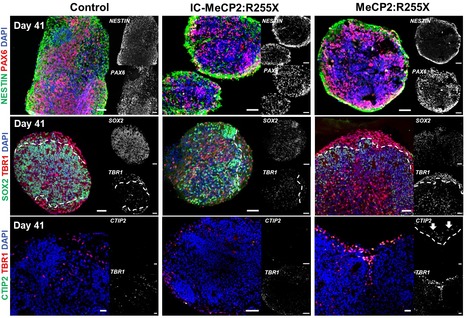
Engineering brain organoids from human induced pluripotent stem cells (hiPSCs) is a powerful tool for modeling brain development and neurological disorders. Rett syndrome (RTT), a rare neurodevelopmental disorder, can greatly benefit from this technology, since it affects multiple neuronal subtypes in forebrain sub-regions. SCERG-iBB researchers have recently established dorsal and ventral forebrain organoids from control and RTT patient-specific hiPSCs recapitulating the 3D organization and functional network complexity of this brain region. The data obtained revealed a premature development of the deep-cortical layer, associated to the formation of TBR1 and CTIP2 neurons, and a lower expression of neural progenitor/proliferative cells in RTT dorsal organoids. Moreover, calcium imaging and electrophysiology analysis demonstrated functional defects of RTT neurons. Additionally, assembly of RTT dorsal and ventral organoids revealed impairments of interneuron’s migration. Overall, these models provide a better understanding of RTT during early stages of neural development, demonstrating a great potential for personalized diagnosis and drug screening. The paper was published in Frontiers in Cell Development Biology.



 Your new post is loading...
Your new post is loading...






